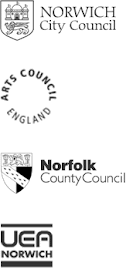The Moth Box
‘I want you to do weird.’ Mark Cocker tells us,’ get away from what you think and look at the extraordinary in front of you. Look into this.’ It is 9.30 and raining and we’re standing in the tool shed in Strumpshaw Fen at the start of a workshop on nature and writing.
‘This’ is a moth box, a square wooden box with two pieces of glass making a valley where moths have crept in to lie among a forest of egg box fragments. We cluster round as Mark takes out a large piece of grey carton, and look as the subtly patterned and coloured creatures come into focus against the dull background. The moths remain still as he passes them round, some with wings spread, others held close to look like extra nubbles on the moulding.
‘They won’t fly off, this is their night time,’ he explains. And they do lie still, asleep except for the eyed hawk-moth, large and plump bodied, as it shivers its wings desperate to fly our attentiveness. The poplar hawk-moth is the grandest, a plum grey the colour of dusk, its uplifted tail and deeply serrated wings like a galleon give it a stately and, if I were thinking of eating it, an alarming appearance.
‘A peppered moth,’ and Mark points to one with outspread wings and variegated speckles. I am handed a piece of egg tray, admire a ‘snout’ the colour of crumbly old paper near a moth of such velvet black with a patterned band, an embroidered elizabethan cape of a moth. Turning over this moth bed I see more and more, they have no sense of up or down and it’s me that worries about them falling off.
I find a traditional looking one, with flat folded wings making that familiar shallow v at the tail end and a mark. ‘There, that pattern, that’s what gives the moth its name,’ says Jenny, a veteran of Strumpshaw Fen, ‘A setaceous hebrew character.‘ Well weird.
The rain continues and so do we dispersing into the woods and the fen itself, our weatherproof greens and browns melting into a landscape where everything is blurred. We need a bird sharp eye to see, and a quiet mind to hear. The next hour gives up woodpecker nestlings, the red headed sort, lesser I believe, then a toad, and for others on this workshop more dramatic sightings, marsh harriers and a grebe.
But the moths still cling to my memory, tiny ones, a finger width or a hand span big, furry legged, blotched or eyed, and I want a dress for summer evenings, softly spotted like the wings of the peppered moth. At home that evening I leave the light on and the door open and there’s one on the faded white door, off white and banded. Tonight I see its uniqueness and want to know it.
Bernardine Coverley
Mother Nature’s Palette by Melanie Beck.
It is interesting how as children we are taught
The sky is blue, trees are brown, leaves are green
Now take a closer look, beyond the simplicity of a child’s colour blocks
Into the artist’s paint box, to see the true colour of nature’s palette
The sky is blue on sunny days but rarely a flat wash of one tone
In reality the wash is graduated, a mixture of hues
Cerulean, cobalt, ultramarine, with large brush randomly blended
Interspersed with white fluffy curls bringing the blues alive
On stormy days there is no sky blue, instead an indigo
Intense, dark and dominant between shades of grey
Pewter, charcoal, almost ivory black with less blending, few random strokes
More thought and defined edges around the silver grey smoke like shapes
Trees are brown it is true but look at that weathered old stump
Ageing bleaches that outer shell, paler, greyer, faded
Unexpected colour like drops from the brush, green moss, pink fungi
Draws your attention, pulls you further into the tree, into the palette
Look deeper into the stump; peel away the layers one by one
Subtle colour changes are exposed with each discarded skin
Careful brushstrokes of sepia, burnt sienna, red ochre, raw umber, Indian red
Separately or combined intensify the strength and depth within
It can’t be denied that leaves are green but what is leaf green?
Light green, dark green, yellow green, olive green, intense green, grey green
Bright and shiny as if still wet on the paper, dulling as time passes, as the colour dries
So many leaves, so many greens, working together complimenting, highlighting
Splashes of floral colour that catch the eye, prominent, distracting
Brought into the foreground by the wealth of greens happy to fade away
Rose, crimson, lemon, gold, violet, mauve, single colours, mingled combinations
Attention to detail painstakingly applied with the finest of brush and the steadiest of hand
With no pattern to copy, no instructions to follow, no advice to listen to
An abstract is created from freedom from restraint, or pressures
Expressing a personality with each colour chosen, each application made
Everything belonging, being important to the picture unfolding
The scene may appear simple before us in its execution of colour
Like that of a child’s innocent eye, not knowing how to express what is before them
Yet is seems that Mother Nature knew exactly what she was doing and the complexity before her
When she carefully selected her colour palette and created her masterpiece.
Saturday, 14 June 2008
Subscribe to:
Post Comments (Atom)


No comments:
Post a Comment